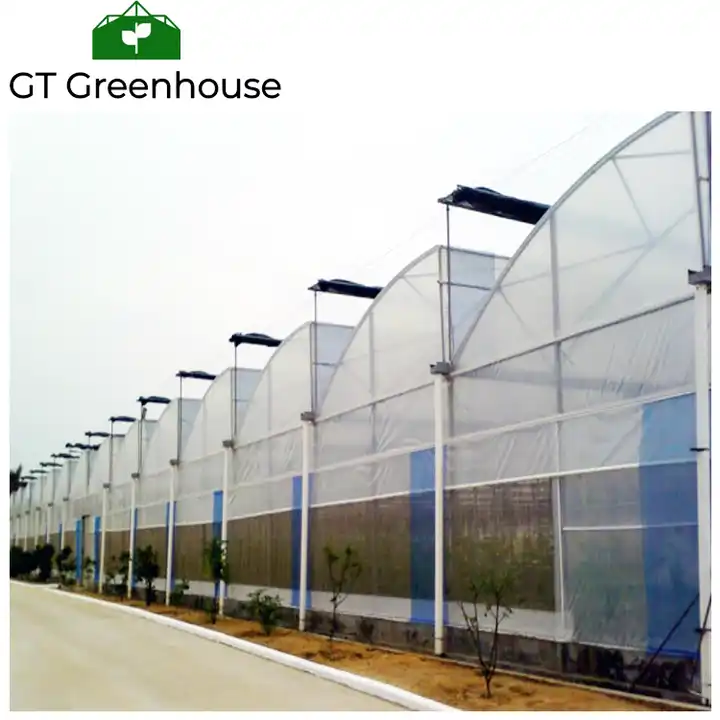Greenhouse cultivation has revolutionized agriculture by providing controlled environments for year-round plant growth. One crucial component of any successful greenhouse is the plastic film that covers its structure. High-quality greenhouse plastic film plays a vital role in maintaining optimal growing conditions, maximizing crop yields, and ensuring long-term durability. In this article, we will explore the key characteristics of high-quality greenhouse plastic film and why it is essential for modern horticulture.
Here is a simple description of high quality greenhouse plastic film:
Superior Light Transmission:
One of the primary functions of greenhouse plastic film is to allow sunlight to penetrate while minimizing energy loss. High-quality films are designed to optimize light transmission, ensuring that plants receive the appropriate spectrum and intensity of light for optimal photosynthesis. These films are typically made from advanced materials that possess excellent clarity and light diffusion properties, reducing the occurrence of shadows and ensuring uniform plant growth.
Exceptional Durability:
Greenhouse plastic film must withstand various environmental challenges, including temperature fluctuations, UV radiation, wind, and hail. High-quality films are engineered to be durable and long-lasting, maintaining their structural integrity and optical properties over extended periods. They are often treated with UV stabilizers to resist degradation caused by the sun’s ultraviolet rays. Reinforced films with multiple layers or cross-laminated structures offer increased tear resistance and puncture protection, ensuring reliable performance in harsh conditions.
Optimal Thermal Properties:
Maintaining a stable and conducive temperature within the greenhouse is crucial for plant growth. High-quality plastic films possess excellent thermal properties, effectively trapping heat inside the structure while allowing for proper ventilation. These films have a high infrared (IR) transmittance, allowing solar energy to enter the greenhouse while minimizing heat loss. Additionally, they can provide insulation during colder months, reducing energy consumption and creating a favorable microclimate for plants.
Moisture Control and Condensation Management:
Proper moisture control is essential to prevent fungal diseases, reduce plant stress, and maintain a healthy greenhouse environment. High-quality greenhouse plastic films are designed to manage condensation effectively. They incorporate anti-condensation additives or coatings that minimize the formation of water droplets on the film’s inner surface. By controlling condensation, these films help prevent water droplets from falling onto plants, reducing the risk of diseases and improving overall plant health.
UV Blocking and Light Diffusion:
While allowing beneficial light to pass through, high-quality greenhouse plastic films are engineered to block harmful ultraviolet (UV) radiation. Excessive UV exposure can damage plants and reduce crop quality. These films typically have UV stabilizers incorporated into their composition, providing protection against UV rays. Moreover, they often feature light-diffusing properties that evenly distribute sunlight within the greenhouse, reducing hotspots and promoting uniform plant growth.
Anti-Drip Properties:
Condensation can be a common issue in greenhouses, particularly during periods of high humidity. High-quality greenhouse plastic films often have anti-drip properties, which means that they are designed to prevent the formation of large water droplets on the film’s surface. Instead, the condensed water tends to form a fine layer that can be easily absorbed by the plants or evaporate gradually. This helps to maintain a drier and healthier growing environment, reducing the risk of plant diseases caused by excess moisture.
Energy Efficiency:
In today’s environmentally conscious world, energy efficiency is a crucial consideration for greenhouse operations. High-quality greenhouse plastic films are often designed to optimize energy efficiency by reducing heat loss and minimizing the need for artificial heating. These films can have infrared (IR) blocking properties that prevent the escape of thermal energy from the greenhouse, thus reducing heating costs. By conserving energy, greenhouse operators can achieve significant savings while minimizing their environmental impact.
Weed Control:
Weeds can be a persistent problem in greenhouse environments, competing with crops for nutrients, water, and space. Some high-quality greenhouse plastic films feature weed control properties that help suppress weed growth. These films are typically treated with additives or have a special design that inhibits the penetration of light required for weed germination and growth. By using weed control films, greenhouse operators can reduce the need for manual weeding or chemical herbicides, promoting healthier and more productive crops.
Ease of Installation and Maintenance:
High-quality greenhouse plastic films are designed for ease of installation and maintenance. They are often lightweight, flexible, and easy to handle, making the installation process more efficient. These films may come with pre-drilled holes or grommets for quick and secure attachment to the greenhouse structure. Additionally, they are typically resistant to dirt, dust, and chemical residues, making them easier to clean and maintain over time.
Environmental Considerations:
Sustainable and eco-friendly practices are increasingly important in modern agriculture. Many high-quality greenhouse plastic films are manufactured with a focus on environmental responsibility. They may be made from recyclable or biodegradable materials, reducing the ecological footprint associated with their production and disposal. Choosing environmentally friendly options can align with your commitment to sustainable farming practices and help meet the demands of environmentally conscious consumers.
It is important to note that while high quality greenhouse plastic films offer numerous benefits, selecting the right film for your specific needs requires consideration of factors such as climate, crop type, and budget. Consulting with experts or suppliers in the greenhouse industry can provide valuable guidance to ensure you choose the most suitable film for your greenhouse operation.
Investing in high-quality greenhouse plastic film is crucial for maximizing crop yields, ensuring plant health, and maintaining a sustainable greenhouse environment. These films offer superior light transmission, exceptional durability, optimal thermal properties, moisture control, and UV protection. By choosing a reliable and efficient plastic film, greenhouse operators can create an ideal growing environment, leading to healthier plants, increased productivity, and ultimately, greater agricultural success.

Comments